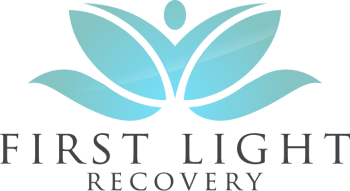What Is Codependency?
Codependency is a learned behavior that can be passed down from one generation to another. It is an emotional and behavioral condition that affects an individual’s ability to have a healthy, mutually satisfying relationship. It is also known as “relationship addiction” because people with codependency often form or maintain relationships that are one-sided, emotionally destructive and/or abusive.
Demystifying Codependency
- Codependency is usually a response to trauma
- Codependency feels shameful. The foremost shame researcher, Brene Brown defines shame as “the intensely painful feeling or experience of believing that we are flawed and therefore unworthy of love and belonging.”
- Codependency is an unhealthy focus on other people’s problems, feelings and needs. Focusing on other people is a way to feel needed and to avoid or distract ourselves from our own pain.
- Codependents are very sensitive to criticism, often feeling easily hurt, and blaming
- Codependents tend to avoid painful feelings
- Codependents don’t ask for what they need and suppress their feelings rather than understand them
- Codependents give even when it hurts
- Codependency is not a mental health diagnosis, it is commonly a symptom of anxiety, depression, and/or PTSD
- You can change your codependent patterns
What Are The Symptoms of Codependency?
- Seeing life as black or white
- Difficulty maintaining healthy relationships
- Belief that others are responsible for our emotions
- Having feelings of powerlessness
- Isolate and resent authority figures
- Fear of change
- Having difficulty setting boundaries
What Are The Feelings Behind Codependency?
- Feeling of inadequacy
- Lack of self confidence
- Cannot make final decisions
- Confusion between love and pity
- Acting like the victim
- Lies when it would be easier to tell the truth
- The helper, always wanting to help the next
- Worry and think about other’s problems more than your own
- Feel safe when giving/helping others
Who Does Codependency Affect?
Codependency often affects a spouse, a parent, sibling, friend, or co-worker; the people closest to you. Originally, codependent was a term used to describe partners in chemical dependency, persons living with, or in a relationship with an addicted person. Similar patterns have been seen in people in relationships with chronically or mentally ill individuals. Today, however, the term has broadened to describe any co-dependent person from any dysfunctional family.
Dysfunctional families do not acknowledge that problems exist. They don’t talk about them or confront them. As a result, family members learn to repress emotions and disregard their own needs. They become “survivors.” They develop behaviors that help them deny, ignore, or avoid difficult emotions. They detach themselves. They don’t talk. They don’t touch. They don’t confront. They don’t feel. They don’t trust. The identity and emotional development of the members of a dysfunctional family are often inhibited
Attention and energy focus on the family member who is ill or addicted. The codependent person typically sacrifices his or her needs to take care of a person who is “sick.” When codependents place other people’s health, welfare, and safety before their own, they can lose contact with their own needs, desires, and sense of self.
How do you overcome a codependency?
- Practice self-sufficiency and assertiveness skills
- Don’t take the blame for other’s actions
- Learn to cope with fears of being alone
- Practice decision-making
- Become comfortable spending time on your own
- Learn to express disagreement in productive ways
- Set realistic limits and expectations but don’t think that you can exercise complete control over another
- Be patient — remember that it took you a long time to get in this situation and it will probably take some time for improvements to occur
You will discover that with change comes fear and anxiety. Remember, all moods fade and pass.
Therapeutic Intervention
The focus of therapy is typically on helping people to become more independent. Cognitive behavioral therapy (CBT) may be used to help an individual challenge negative thoughts and start engaging in more independent behaviors.
More About Codependency:
The following excerpt from the book The Emotionally Abused Woman: Overcoming Destructive Patterns and Reclaiming Yourself gives additional information about the dilemma of codependency:
“The irony is that as much as a “codependent” feels responsibility for others and takes care of others, she believes deep down that other people are responsible for her. She blames others for her unhappiness and problems and feels that it’s other people’s fault that she’s unhappy. Another irony is that while she feels controlled by people and events, she herself is overly controlling. She is afraid of allowing other people to be who they are and of allowing events to happen naturally. An expert in knowing best how things should turn out and how people should behave, the codependent person tries to control others through threats, coercion, advice giving, helplessness, guilt, manipulation, or domination.”




